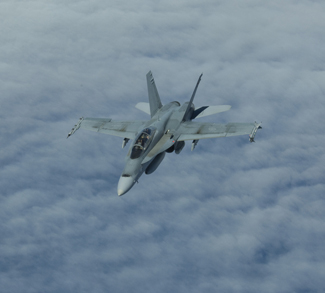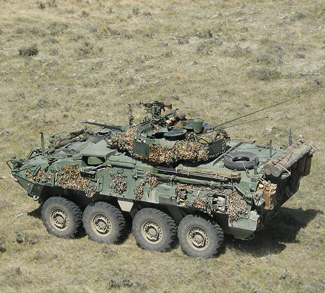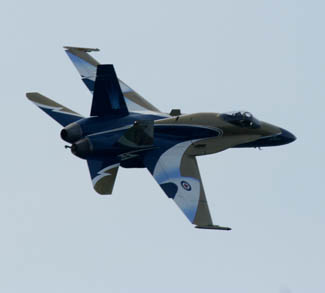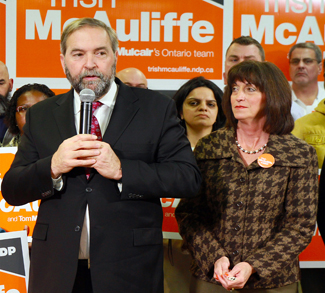In March 2006, Prime Minister Stephen Harper chose Afghanistan for his first official visit in office. In a bold speech to Canadian troops in Kandahar, Harper declared, “You can’t lead from the bleachers. I want Canada to be a leader.” He then launched a thinly-veiled attack on the policies of the Liberal governments of Jean Chretien and Paul Martin, declaring that Canada was “demonstrating an international leadership role, not carping from the sidelines.” Likewise, when visiting Canadian troops participating in the Libyan mission, Harper asserted that “a handful of soldiers is better than a mouthful of arguments.”
As these statements show, Harper and his government pride themselves on beefing up Canada’s hard power assets. Indeed, the Canada First Defence Strategy the Tories released in 2008 is full of criticism of the Liberals’ stewardship during the 1990s. The strategy blames Liberal neglect for producing a “hollow force,” suffering from an “overall degradation of equipment” and “eroded…preparedness.” At the beginning of the document, Harper declares his intent to revitalize the Canadian Forces (CF) in order to make Canada “a credible and influential country.” This conservative approach is self-consciously opposed to the Liberal emphasis on concepts such as soft power, human security, the Responsibility to Protect, and a ban on landmines, as espoused by past ministers such as Lloyd Axworthy and Paul Martin. The Tories appeared to share the beliefs of political scientist Kim Richard Nossal, who famously argued in 1998 that Canada needed “not soft power, but power period.” Instead of practicing “pulpit diplomacy” while failing to commit tangible resources, Canada had to revitalize its hard power assets to protect and advance its interests.
Now it is possible to look back on the Harper government’s rhetoric and determine whether several years of Conservative rule have effectively revitalized Canada’s hard power capabilities. In doing so we will defer to Nossal’s four pillars of statecraft: military, diplomacy, development, and intelligence.
Certainly, Harper has not been lacking in his efforts to strengthen intelligence, as the burgeoning budget and capabilities of the Communications Security Establishment Canada attest. Admittedly, foreign affairs and development have both suffered significant budget cuts. Yet these cuts should be placed in the proper context of Harper’s wider foreign policy priorities. The prime minister has emphasized trade promotion and the negotiation of free trade agreements, and has worked to make Foreign Affairs and Development serve these ends, whether rightly or wrongly. These efforts have apparently borne fruit in numerous free-trade agreements, most recently in the Comprehensive Economic and Trade Agreement (CETA) with the EU.
But it is on the military that Harper must be judged according to his own rhetoric. Finance Minister Jim Flaherty’s recent budget resulted in the Department of National Defence (DND) losing $3 billion that had previously been earmarked for procurement. Admittedly, Minister Flaherty pledges it will be restored four years in the future, arguing that it does not make sense to give the military money that it cannot spend right away. However, as Murray Brewster of the Canadian Press explains, the cuts are a sign of how low the DND has fallen in the Ottawa power hierarchy.
These cuts will negatively impact the military’s capabilities, especially in the context of previous Harper defence cuts. The government has already slashed the Canadian Forces’ regular budget covering operations, maintenance, and training, and the results are increasingly evident. Funding for CF-18 fighter jet operations and maintenance was cut by 25%, to cite just one example. The new delays in procurement will put further pressure on the military, forcing it to indirectly spend more on operating and maintaining old equipment. Thus, for the foreseeable future the military will be increasingly stuck with out-of-date equipment that is poorly maintained and operated by personnel with inadequate training, which will inevitably have a negative impact on combat readiness.
Furthermore, as numerous analysts point out, even after the long-awaited federal surplus arrives in the 2015-2016 fiscal year, the military will likely continue to feel the budgetary pinch. Carleton professor Dave Perry notes that the Harper government’s key priorities are to cut taxes and spend money on domestic programs, which will leave little funding for the military. Moreover, Michael Byers has argued that the government’s stop-and-start moves on procurement have conveniently pushed back the acquisition costs of major systems till after the 2015 election. As a result, it is highly unlikely that the CF will be able to acquire all the systems outlined in the Defence Strategy without an increase in funding.
Of course, like many of its NATO allies the Harper government has faced significant fiscal constraints that made some reductions necessary. However, it has compounded these problems with poor decision-making on procurement. First, the government failed to effectively reform the procurement process, which has resulted in cost-overruns and delays. Second, the government’s emphasis on making procurement serve domestic job creation has significantly boosted costs. As a result, Canada is currently in the unfortunate situation where its military is likely to soon lack the capabilities necessary to fulfill the commitments outlined in the Canada First Defence Strategy – exactly the situation that Harper decried prior to taking office.




